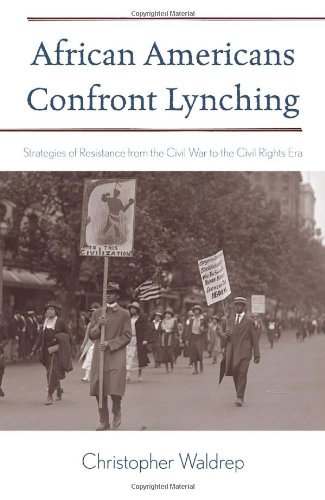

Most ebook files are in PDF format, so you can easily read them using various software such as Foxit Reader or directly on the Google Chrome browser.
Some ebook files are released by publishers in other formats such as .awz, .mobi, .epub, .fb2, etc. You may need to install specific software to read these formats on mobile/PC, such as Calibre.
Please read the tutorial at this link: https://ebookbell.com/faq
We offer FREE conversion to the popular formats you request; however, this may take some time. Therefore, right after payment, please email us, and we will try to provide the service as quickly as possible.
For some exceptional file formats or broken links (if any), please refrain from opening any disputes. Instead, email us first, and we will try to assist within a maximum of 6 hours.
EbookBell Team

5.0
68 reviews
ISBN 10: 074255273X
ISBN 13: 978-0742552739
Author: Christopher Waldrep
This book examines African Americans' strategies for resisting white racial violence from the Civil War until the assassination of Martin Luther King, Jr., in 1968 and up to the Clinton era. Christopher Waldrep's semi-biographical approach to the pioneers in the antilynching campaign portrays African Americans as active participants in the effort to end racial violence rather than as passive victims.
In telling this more-than 100-year-old story of violence and resistance, Waldrep describes how white Americans legitimized racial violence after the Civil War, and how black journalists campaigned against the violence by invoking the Constitution and the law as a source of rights. He shows how, toward the end of the 19th century and into the 20th, anti-lynching crusaders Ida B. Wells and Monroe Work adopted a more sociological approach, offering statistics and case studies to thwart white claims that a black propensity for crime justified racial violence. Waldrep describes how the NAACP, founded in 1909, represented an organized, even bureaucratic approach to the fight against lynching. Despite these efforts, racial violence continued after World War II, as racists changed tactics, using dynamite more than the rope or the gun. Waldrep concludes by showing how modern day hate crimes continue the lynching tradition, and how the courts and grass-roots groups have continued the tradition of resistance to racial violence.
A rich selection of documents helps give the story a sense of immediacy. Sources include nineteenth-century eyewitness accounts of lynching, courtroom testimony of Ku Klux Klan victims, South Carolina senator Ben Tillman's 1907 defense of lynching, and the text of the first federal hate crimes law.
Chapter1 : Introduction
Chapter 2: Content
Chapter 3: Conclusion
Chapter 4: Appendices
Chapter 5: Glossary
Chapter 6: References
Chapter 7: Index
when were african americans allowed to vote
famous african americans
how many african americans are in the united states
percentage of african americans in the united states
can african americans get lice